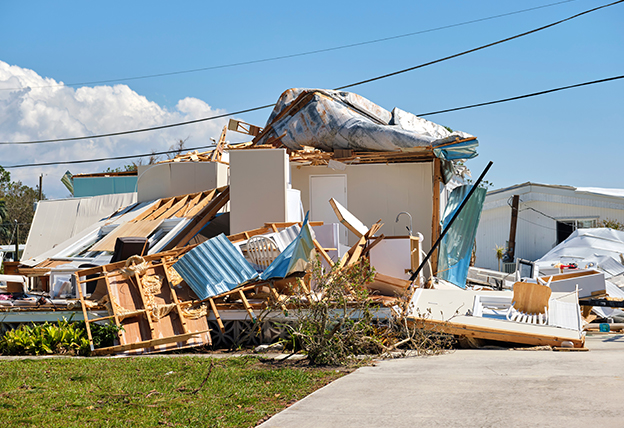
Impact of Natural Disasters on the US Mortgage Industry
In November 2020, after a year marked by widespread property damage due to storms and flooding, the US Federal Reserve acknowledged climate change’s influence on the US financial system and mortgage market for the first time in its semi-annual Financial Stability Report.The report noted that properties will be increasingly “subject to acute hazards, such as storm surges associated with rising sea levels and more intense and frequent hurricanes.” This statement is aligned with a 2019 letter to the Federal Reserve bank of Chicago,which states that “climate scientists have expressed concerns that this recent wave of devastating storms is not an anomaly, but rather part of a long-term trend.”
Impact of Natural Disasters on the US Banking Sector
Increased Default Rates
Increased Prepayment Rates
Property Value
Impact of Natural Disasters on the US Banking Sector
Increased Default Rates
Loss Spillover Risk
Increased Loan Demand
Fast, On-time, and Accurate Outsourced Property Preservation Support that helps you Reduce Costs and Process More Orders
What are the most critical components of how the mortgage industry should prepare to respond to the waves of increasingly damaging natural disasters?
- How best do we communicate to all parties involved in the mortgage process? Are communications affected?
- How clearly do mortgage companies understand the extent of damages? How effectively are we communicating those damages or affected assets to financial institutions?
- How clearly do mortgage companies understand the extent of damages? How effectively do we communicate those damages or affected assets to financial institutions and local municipalities?
- How best do we prepare all vendor networks for the tasks that need to be done?
- How best do we prepare our internal staff and field networks, so they can pick up the demand for more volumes and keep up with their current and internal workloads, with getting the results back to the institutions in case of internal staff?
Benefits of Mortgage Support Services for the US Mortgage Sector
- Provides uninterrupted operational support to organizations in the US mortgage sector in disaster-affected areas.
- Provides expertize in all facets of the mortgage industry at cost-effective rates. This is especially useful for organizations that have recently incurred losses due to natural disasters.
- Thoroughly analyzes various parameters to improve threat perception, and help partner organizations prepare themselves for impending disasters.
- Assists in all work order processing, work order quality controlling, etc.
- Assists in ‘right-sizing’ the vendor networks, to be able to handle the increased workloads.

